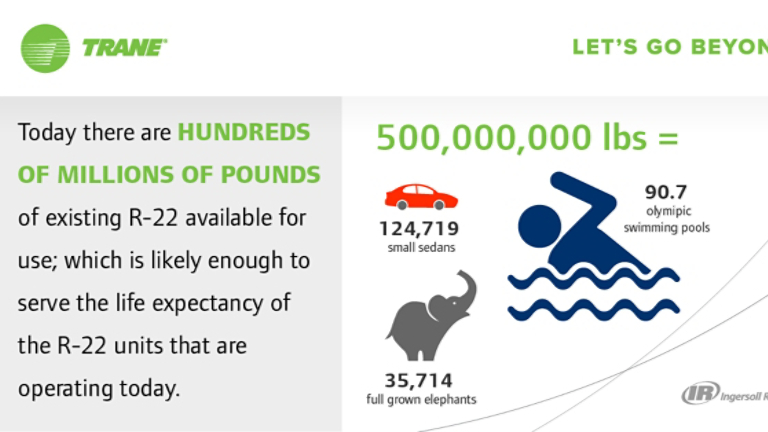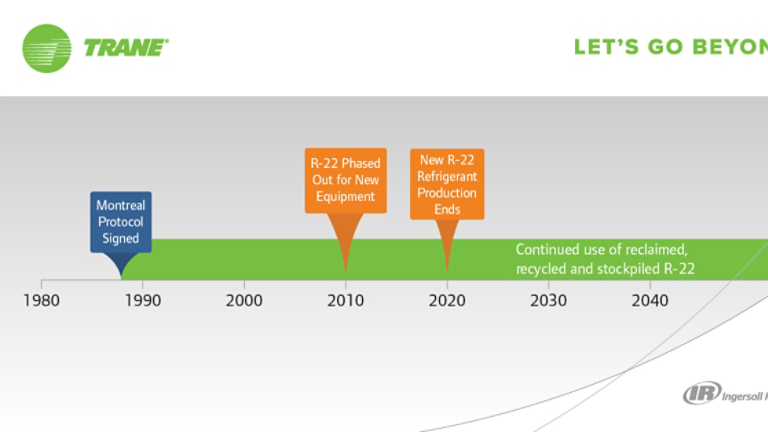What Should System Owners Do Next?
Maintain your service and maintenance schedules for the expected life of the equipment. Proper maintenance helps prevent refrigerant leaks and, if a leak does happen, technicians will catch it early. Even if the price of R-22 climbs, the cost of replacing a few pounds will be relatively minor.
Owners who want to convert an R22 refrigerant system to a different refrigerant should proceed with extreme caution. Air conditioning units—Trane’s and everyone else’s—operate best with the refrigerant they were designed to use. An exact “drop-in” replacement alternative for R22 does not exist, so changing refrigerant isn’t as simple as changing the oil in a car. It requires an engineered approach that evaluates the hardware, lubrication, refrigerant and controls to optimize performance. System efficiency losses and a voided warranty are some of the risks.
How Do You Decide When to Repair Equipment and When to Replace It?
Eventually, your R22-based HVACR equipment will reach the end of its useful life, but how will you know when the time is right to replace it? Consider these factors:
- Evaluate the impact on occupants’ comfort and overall maintenance cost.
- Consider the time and money spent on emergency repairs.
- Estimate the energy savings associated with new, more efficient equipment versus the existing system.
- Consider other customer requirements, such as environmental, budget, or building performance.
Whether maintaining a system that runs on R-22, converting or replacing it with new equipment, make sure you understand the trade-offs of each option.
Maintaining an R-22 system for its anticipated life span is the safest way to maintain efficiency and your warranty.
Before making any decisions regarding refrigerant conversions or system upgrades, be sure to talk to someone who understands the complexities of the regulations and the pros and cons of next-generation refrigerants.


